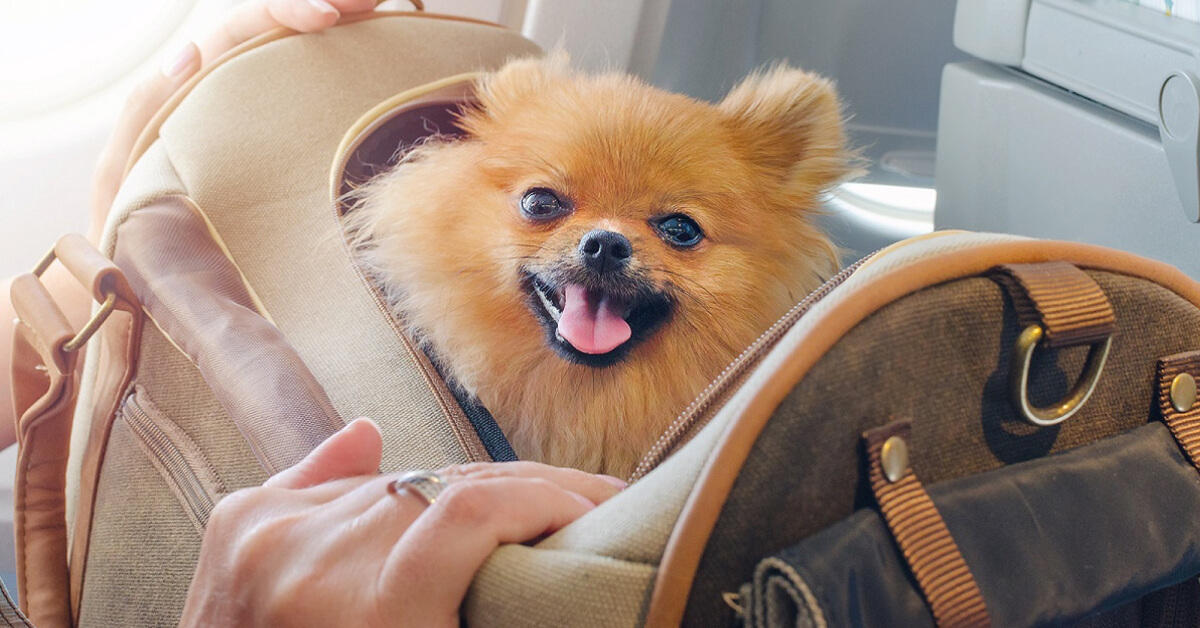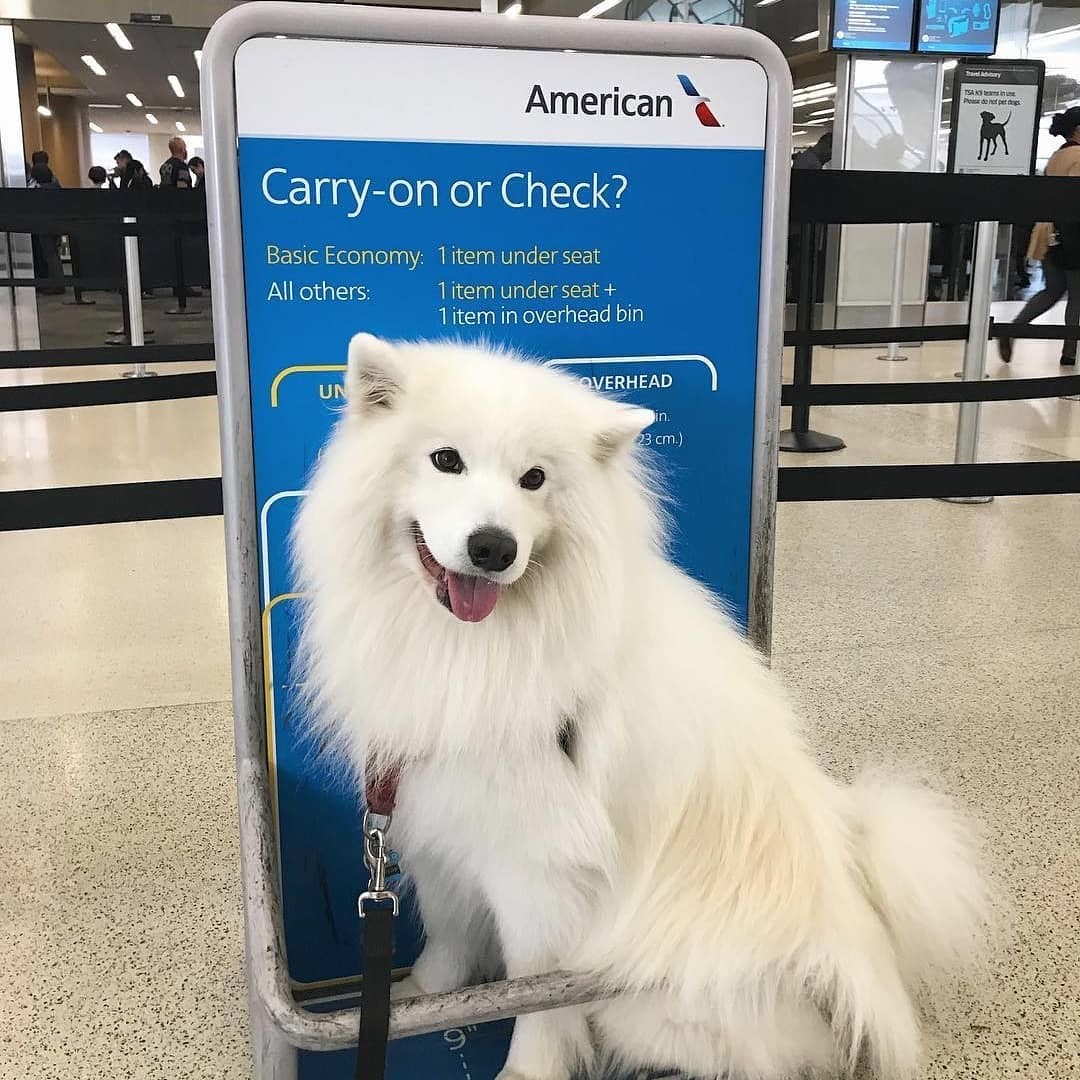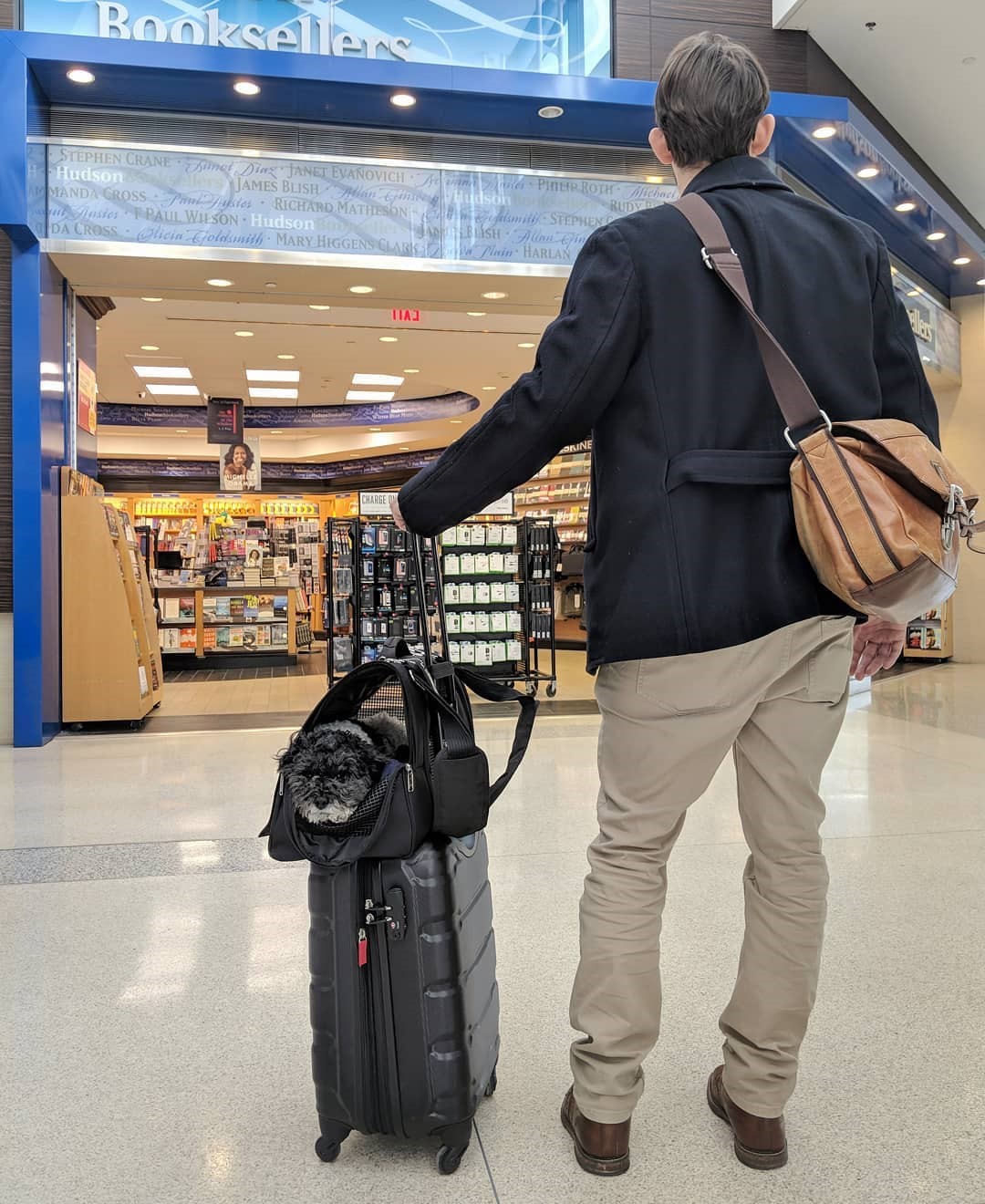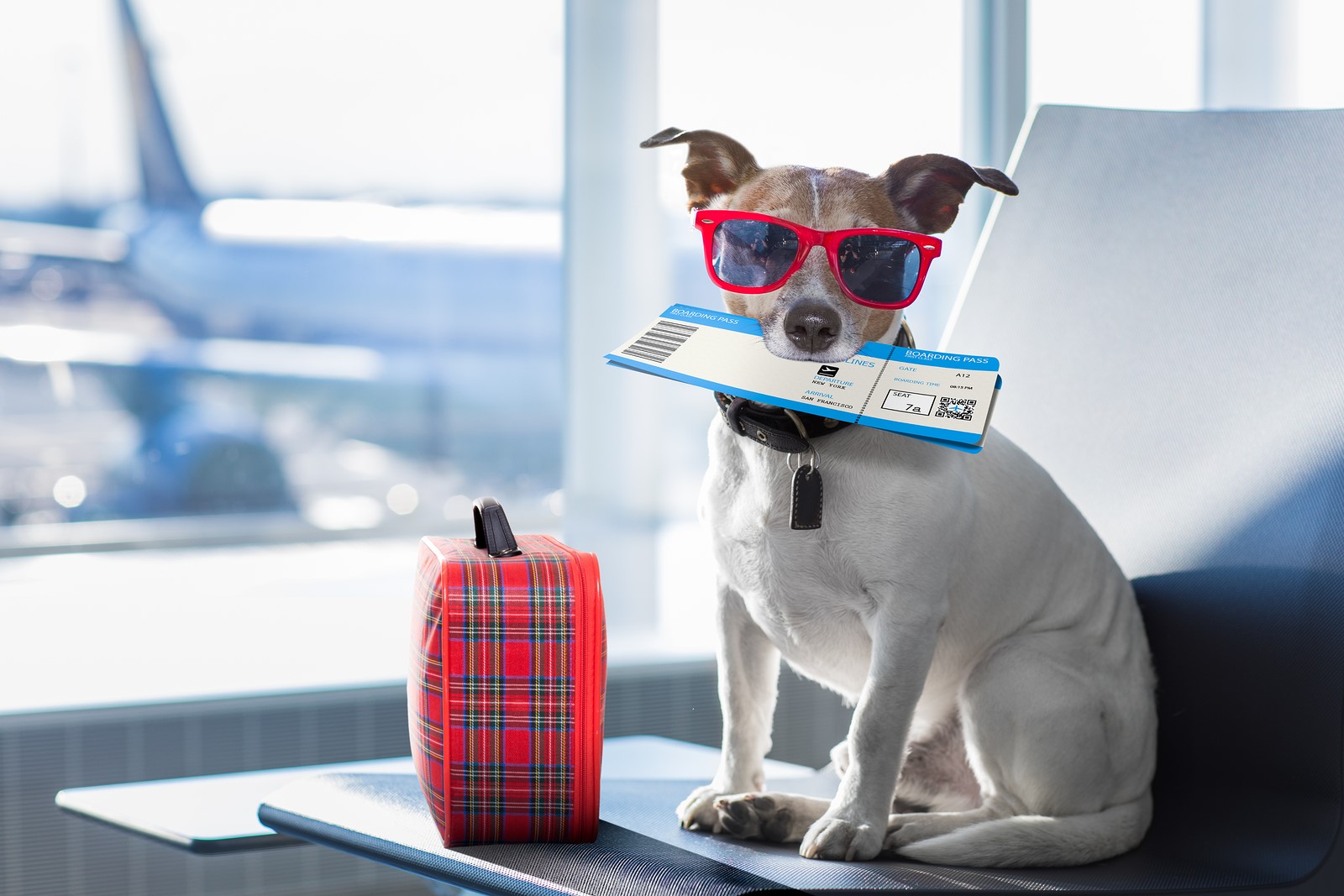Flying With Pets: What To Know Before You Take Off

Everything you need to know about flying with pets
Travelling with your pet doesn’t have to be a stressful affair – all it takes is careful preparation. But first, you have to know that pets have special requirements when they board a plane or enter a country. It’s not as simple as booking a ticket and hopping on board!
There are processes like registration, vet visits, and other preparations that have to take place before your pet goes onto the plane, and if you’re not sure where to start, not to worry. We have tips on how you can ensure a smooth-sailing flight with your furry friend.
The different types of travelling

Source: @cutesamson
Unlike us humans, pets don’t get just one option alone. However, they don’t necessarily get the privilege of choosing either. Below are three ways that your pet can travel while flying in the air:
1. In the cabin
Usually, only small dogs and cats are allowed to hop into the cabin with you, unless the airline specifies otherwise. These less intimidating breeds include the Chihuahua, Maltese, and Miniature Poodle, though they must remain in their carrier at all times, which should fit under the seat in front of you.
However, the weight and size of your pet matter too. For most US-based airlines, pets allowed in the cabin have to weigh about 5 – 6 kilograms and be no more than 19 inches in length, starting from the tip of the nose the to the base of the tail.
In most circumstances, though, a service dog will be allowed on board with different restrictions. That said, to save yourself from a hard time in case your furkid disrupts the peace of other passengers by barking and whining, it is best to settle it in for the flight with a toy or blanket.
Out of the three ways your pet can fly, bringing your pet along in the cabin is naturally the crowd-favourite because you can look after them 24/7 and ensure their safety at all times.
2. Checked baggage
If your pet, unfortunately, doesn’t fit the cabin requirements, it will usually have to travel as checked baggage instead.
It is required for your pet to be at least eight weeks old or three months old though, depending on the airline’s requirements. However, keep in mind that your pet has to travel in an IATA compliant pet crate fitted with a secured, spring latch door, waterproof button, and sufficient ventilation. They will be on their own so you have to see fit that they are kept safe and sound without supervision.
3. Through the cargo
All the pet owners with large cats, dogs, or any other animals – put your hands up! If your pet weighs more than the maximum weight limit of 32 kilograms, Occupational Health and Safety rules state that your pet will have to travel in cargo instead.
Just like checked baggage, they will have to travel in an IATA compliant pet crate as required. Generally, it is considered pretty safe as most cargos come with air conditioning and tight security. If you’re still feeling worried, give a kind reminder to the captain and crew about your pet. They will make sure to constantly monitor temperature and pressure levels.
Health-check ups and certifications

If you think that travelling with a pet is as easy as the movies, think again. Airlines require you to visit any one of the local vets in Singapore for a detailed health check-up in order to score a seat on the flight.
From rabies vaccinations to getting deworming, anti-tick, and flea treatments, all these need to be done during the check-up. You’ll need to provide proof to the airline as well, which includes health certificates, pet passports, and other related health documents.
For pets that suffer from anxiety, your vet may even prescribe a mild sedative to get your precious pet to calm down and relax during the trip. However, it is usually recommended to not bring them along the trip if they can only travel by cargo. Instead, try looking for pet sitters or pet boarding places in Singapore, where a professional caretaker can look after your best bud!
Your pet’s comfort

Source: @forestthekitty
Since your furkid will be in the escape-proof container for at least the entire duration of the flight, it is important to ensure it has sufficient space to stand and sit erect, lie in a natural position, and move freely. Furthermore, it is recommended to let it familiarise with the carrier to avoid unnecessary stress.
Even though you should feed and hydrate your pet up to two hours before the flight, food and water containers are essential additions to your pet’s container. Still, your furkid will surely appreciate having some company in the form of its favourite toy.
Risks involved

Source: @ellencmchiu
There are bound to be risks when taking your pet on an airplane, no matter how small. Even though you may have introduced your furkid to its travel carrier, unfamiliar stimuli including new sights, sounds, and smells can be unpleasant and cause stress to your pet.
Brachycephalic breeds, which are flat-faced pets such as Pekingeses, Shih Tzus, and Himalayan cats, are more prone to partial airway obstruction which causes shortness of breath and in turn, overheating. This oxygen deprivation places them at a higher risk of heatstroke, which can be fatal, especially since you will be away from your pet.
To ensure the safety of such pets, airlines either have a restriction or special regulations in place, which may apply to certain dog breeds such as the American Bulldog, Caucasian Shepherd Dog, and Rottweiler.
With all the steps involved in travelling with your pet, be sure to keep a checklist of the necessary things to do and consult with your veterinarian if your pet is fit for travel before you take your furkid all around the world.
Flying with locally-known airlines

While the guidelines for travelling with your pet will differ according to airlines, here is a brief overview of travelling with pets on these more locally well-known airlines:
Singapore Airlines:
Pets travelling with Singapore Airlines must be at least three months old. For travel as checked baggage, the upper limit for the combined weight of your pet and its container is 32kg. While Singapore Airlines’ rules and regulations are in accordance with IATA requirements as with other airlines, the company has a strict policy that turns down pets from other airlines.
Qatar Airways:
For Qatar Airways, the weight restriction is given more leeway – travel by cargo is available if your pet exceeds 75kg. Though, here’s a fun fact: aside from the usual pets, Qatar Airways accepts falcons in the Economy Class cabin!
Lufthansa:
Of the three, Lufthansa is the only airline that accepts animals – with a limit of 8kg – as additional carry-on baggage in the cabin. Otherwise, travel as checked baggage or cargo is available.
In truth, there’s still a lot more to learn about flying in the air with your beloved pet, but we hope that with this information, you at least have some kind of idea of what you have to consider and do before deciding to rope in your pet on your travels.








